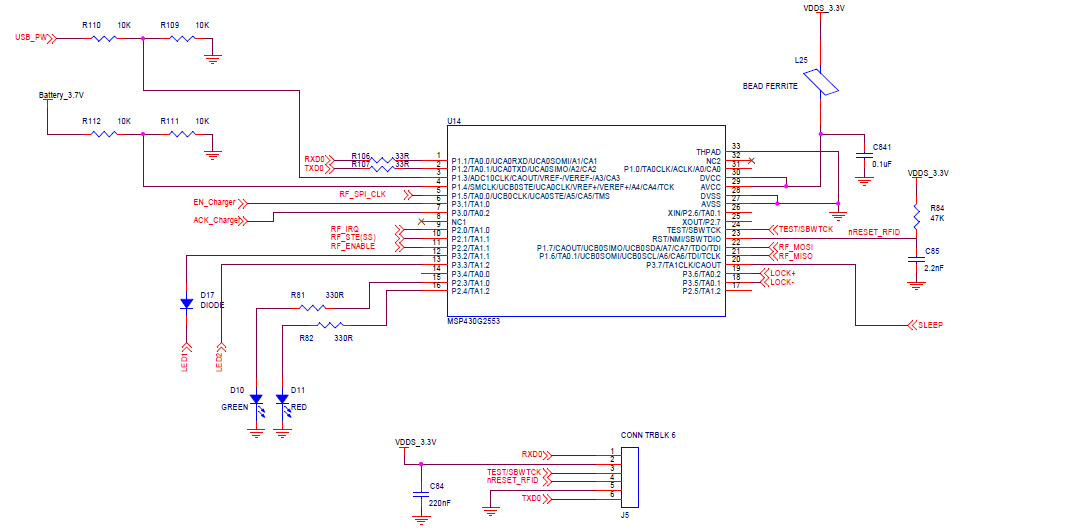The 'secure' way is to compare the frequency output of the DCO with a known frequency source. There's a calibration software available that compares the DCO output to the 32768Hz of a watch crystal (or an external precision 32768Hz clock input) to determine the actual DCO frequency - and adjust the DCO until it matches the wanted result.
Hi,'DCO is Digitally controlled oscillator'. To control it you will need to see the bits to set/clear in the family user guide section 5.3 (worth reading all of section 5).You can find information on the speeds in the device data sheet in the 'DCO Frequency' section:SMCLK (Sub Main Clock) is usually set to be the same as DCO, but can be configured to run from other sources, I believ from external oscillators/crystals or from the Timer modules. I may be wrong with this but I am not far off.There are macros for setting the DCO to certain speeds, I cant remembner them from the top of my head right now, but I believe they areCALIBRATE1MHZ;CALIBRATE8MHZ;CALIBRATE16MHZ;I will confirm this when I get a chance, or maybe someone else can give a more precise answere.Good luck!EDIT: To set the DCO to certain speeds you can do this:BCSCTL1 = CALBC11MHZ; // DCO at 1 MHzDCOCTL = CALDCO1MHZ; // DCO at 1 MHzYou can also use 8MHZ or 16MHZ. I believe these are macros defined in the msp430.h header, though I am quite new to this but it works for me using CCSv5! For other speeds you will need to consult the userguides/datasheets for the correct bits in the DC0CTL and BCSCTL1 registers. DCO is an oscillator, SMCLK is a clock.Clocks are system.wide available clock pulse channels which can be selected by peripherals.There's MCLK, SMCLK and ACLK for general usage. Also, there are a few others like ADC10CLK/ADC12CLK, TAxCLK etc.
Think of them as somethign like the supply layers on a PCB.Now a supply layer must be sourced by something. These are the oscillators like DCO, REFO, VLO or XT1/XT2. The clock module offers configuration settings for wich oscillator shall sourced which clock. And in the peripherals you can choose which clock to use (without knowing or needing to know where it comes from).For the ADC10CLK/ADC12CLK, there's another oscillator available: MODOSC.
Msp430 Clock Tutorial
And for TAxCLK, the clock source is an external signal on an input pin.About how to program the DCO, you'll find a description of the DCO in the 'basic clock system +' chapter of the 2x family users guide. It is valid for all 2xx family devices.
The explicit values of the DCO (min/max frequencies, tolerances, drift etc.) are in the 2553 datasheet. All content and materials on this site are provided 'as is'.

TI and its respective suppliers and providers of content make no representations about the suitability of these materials for any purpose and disclaim all warranties and conditions with regard to these materials, including but not limited to all implied warranties and conditions of merchantability, fitness for a particular purpose, title and non-infringement of any third party intellectual property right. No license, either express or implied, by estoppel or otherwise, is granted by TI. Use of the information on this site may require a license from a third party, or a license from TI.Content on this site may contain or be subject to specific guidelines or limitations on use.

All postings and use of the content on this site are subject to the of the site; third parties using this content agree to abide by any limitations or guidelines and to comply with the of this site. TI, its suppliers and providers of content reserve the right to make corrections, deletions, modifications, enhancements, improvements and other changes to the content and materials, its products, programs and services at any time or to move or discontinue any content, products, programs, or services without notice.